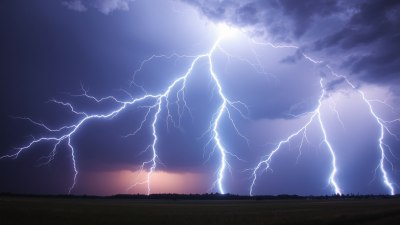Why You Feel More Social When It’s Warm and Less So When It’s Cold
Discover how temperature influences social behavior, mood, and interaction levels.

This image was created with the assistance of Freepik
The weather has a profound impact on our daily lives, influencing everything from our clothing choices to our mood and even our social interactions. Many people report feeling more social and extroverted during warmer months, while colder winter days often lead to feelings of isolation and introspection. This phenomenon isn’t just a coincidence; it is deeply rooted in biology, psychology, and environmental factors. Understanding why temperature affects our social behavior can improve our coping strategies during extreme weather conditions and enhance our engagement with our community.
The Biological Connection
The human body is designed to respond to its environment, and temperature plays a crucial role in various biological processes. In warmer temperatures, the body tends to release more endorphins and serotonin, hormones associated with happiness and well-being. These chemical changes can instinctively make individuals feel more sociable and inclined to engage with others.
Conversely, during colder months, our bodies often enter a state of preservation. The drop in temperature can elevate cortisol levels, the stress hormone, making us less inclined to seek social interaction. Studies suggest that lower temperatures may increase feelings of lethargy and melancholy, leading many to prefer solitude or small gatherings to conserve energy.
The Psychological Aspect
Psychologically, the warmth of a sunny day often correlates with positive emotions. People tend to associate sunny days with fun activities, outdoor gatherings, and vacations. This association can create a cycle in which the enjoyment of social interaction increases on sunny days, fostering connections between individuals.
In colder months, people may experience Seasonal Affective Disorder (SAD), a form of depression that occurs at specific times of the year, typically in winter when daylight hours are shorter. Symptoms of SAD can include high levels of fatigue, irritability, and social withdrawal, reducing the desire to engage with others and leading to a more solitary lifestyle.
Environmental Influence
The environment plays a considerable role in shaping our social behaviors. Warm weather often invites outdoor activities, such as barbecues, picnics, and festivals, which naturally create opportunities for social interaction. Parks and public spaces are filled with people enjoying nature, and social events tend to be more frequent and varied during spring and summer.
In contrast, the onset of winter typically leads to people spending more time indoors. Indoor spaces can sometimes lead to feelings of confinement and a decreased ability to connect with others. This lack of social stimulation can aggravate feelings of loneliness, further driving the decrease in social interactions.
The Influence of Light
Light plays a significant role in regulating our circadian rhythms, which in turn affects our mood and energy levels. Longer daylight hours in warmer months can lead to increased serotonin production and improved mood, further enhancing the desire to socialize.
As daylight decreases during winter months, melatonin levels can rise, prompting feelings of tiredness and lethargy. The lack of natural light can also lead to diminished motivation to seek out social situations, pushing people into a more introspective state.
Social Norms and Culture
Cultural factors also influence how temperature affects social behavior. In many cultures, warm weather is associated with outdoor socialization and community gatherings. For example, in Mediterranean countries, it is common to see families dining outside during warmer months, fostering a culture of social connection.
On the other hand, cultures that experience harsh winters may adapt to their environments by fostering indoor social activities, such as game nights or cozy winter gatherings. However, even within these cultures, there can still be a noticeable decline in social activities during the coldest months.
Practical Implications
Understanding how temperature affects our social behavior can have practical implications for mental health and community engagement. For individuals experiencing feelings of isolation during colder months, finding ways to connect with others, such as joining clubs, participating in online communities, or scheduling regular meetings with friends, can be beneficial.
Additionally, communities can promote social connection by organizing winter events, such as outdoor markets, winter festivals, or community service projects. Providing resources and support for mental wellness during colder months is essential and can help combat the effects of loneliness associated with the winter season.
In conclusion, the relationship between temperature and social behavior is multifaceted, influenced by biological, psychological, environmental, and cultural factors. Warmer temperatures tend to promote social interaction through the release of happiness-inducing hormones and the prevalence of outdoor activities, whereas colder temperatures often lead to a retreat into solitude, increasing the chances of feelings of isolation. Acknowledging these patterns can help us develop meaningful strategies for maintaining social connections throughout the year, regardless of the weather. Emphasizing community involvement, mental health awareness, and proactive engagement can ensure individuals feel connected and supported, regardless of the climate.











